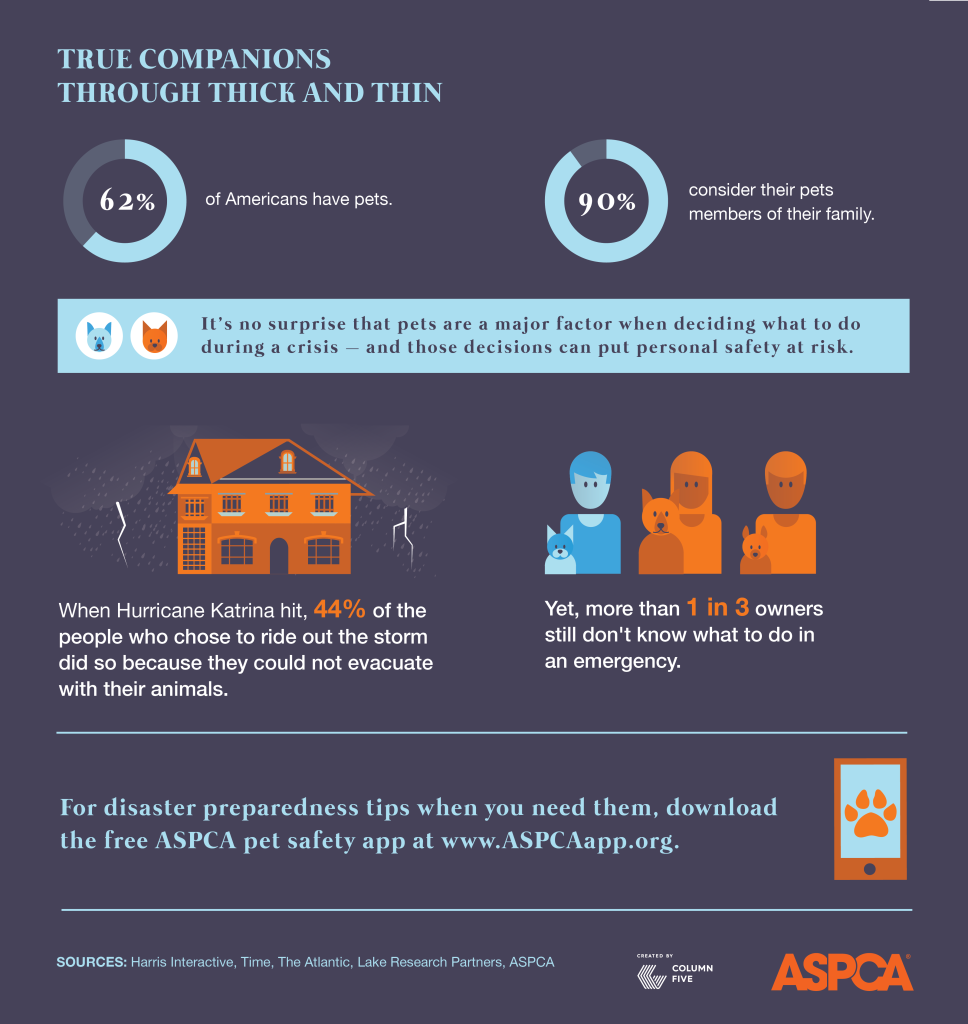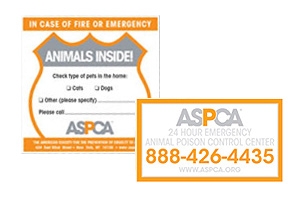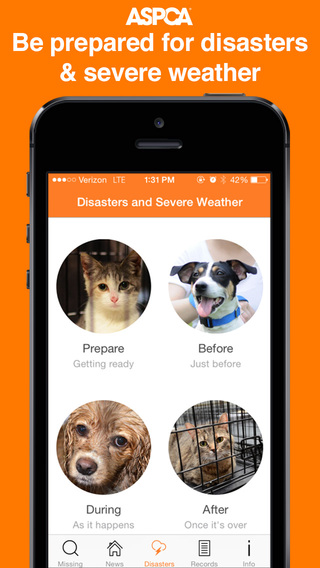With National Disaster Preparedness Month (September) on the heels of the 10th anniversary of hurricane Katrina (which left over 600,000 animals stranded or dead), the ASPCA (American Society of the Prevention of Cruelty to Animals) conducted a survey to see if pet owners are ready when disaster strikes.
According to the ASPCA:
A national poll conducted by Lake Research Partners and commissioned by the ASPCA revealed that more than one-third (35 percent) of cat and dog owners don’t have a disaster preparedness plan in place.

In the Northeast, nearly half of dog owners (45 percent) and cat owners (42 percent) don’t know what they would do with their pets in an evacuation, compared to less than one-third of dog owners (28 percent) and cat owners (30 percent) in the South, where hurricanes are most common.
For pet owners who have an emergency plan in place, the ASPCA’s national study found that an overwhelming majority (85 percent of dog owners; 81 percent of cat owners) intend to bring their pets with them in the event of an evacuation. The research study also found that only a quarter of dog owners (28 percent) and cat owners (24 percent) say their animals are micro-chipped.

Almost half (44%) of the people who refused to evacuate during Hurricane Katrina said they did so because they felt they could not bring their animals with them.
To help prevent what happened during Katrina, the ASPCA is encouraging pet owners to pledge to prepare for their pets in the event of a natural disaster and share our “When Disaster Strikes” infographic, which includes simple steps that can save lives in the event of an emergency.

Here are some ASPCA tips on emergency preparedness:
- Never leave your pet behind when evacuating. If it’s not safe for you, it’s not safe for your pets.
- Make sure all pets wear collars and ID tags with up-to-date identification. The ASPCA also recommends micro-chipping your pet as a more permanent form of I.D. It could be their ticket home if you become separated.

- Put a rescue alert sticker on your door or window (somewhere visible to rescue workers), which will let rescuers know that pets are inside your home. You can get a free one here.

- Make a pet emergency kit to keep in your home with items such as a pet carrier, medical records, water, pet food, a bowl, any necessary medications, pet first aid supplies and leashes.
- Arrange a safe haven outside of the evacuation zone for your pets in advance of a disaster—this could be a friend’s house, a pet-friendly hotel, or a pet shelter.
- In the event of a disaster, call your office of emergency management to find out which evacuation shelters are pet-friendly. If you lose your pet, they can also let you know where rescued or lost animals might have been taken.
- Download the ASPCA mobile app. We’ve created a free mobile app that tells pet owners what to do before, during, and after a disaster, even without internet connectivity. Our app also gives personalized instructions on how to search for your pet should you become separated. You can also store your pets’ medical records and other important information often needed when bringing your animal to an evacuation shelter, such as micro-chip number and veterinary contact info. The app can be downloaded for free on both iPhone and Android at www.aspca.org/MobileApp

